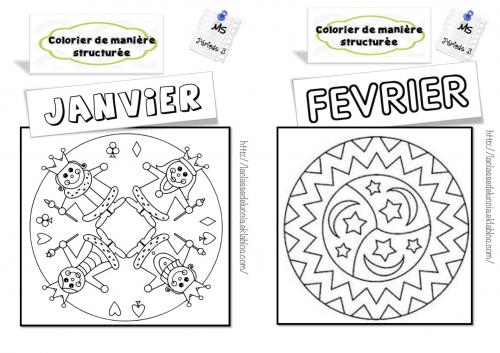Après une pause non-négligeable (heureusement que les règles se sont largement assouplies dernièrement), je suis retournée sur le forum de la Daring Kitchen pour voir ce à quoi ressemblaient les derniers challenges. Le challenge des Daring Bakers, proposé par Mandy de What the Fruitcake, était un gâteau Battenberg (dont je n’avais jamais entendu parler) qui semblait raisonnablement simple à faire (pour un retour à de la pâtisserie d’un niveau supérieur au brownie au chocolat) et qui a néanmoins posé sa dose de challenge. C’est clairement pas le gâteau le plus réussi du monde, mais il est quand même presque présentable, malgré de larges doutes pendant sa confection. Et il est bon.
After a non-trivial amount of time (good thing the rules got much laxer these days) away, I got back on the Daring Kitchen forum to see what the latest challenges looked like. The Daring Bakers challenge, proposed by Mandy from What the Fruitcake, was a Battenberg cake (I had never heard of it before) which seemed quite easy to make (to get back to « baking at a level a bit beyond chocolate brownies ») and which actually posed a number of challenges to me. It’s clearly not the prettiest cake of the world, but it’s almost presentable, even though I had a lot of doubts about that while I was making it. And it was tasty.
D’abord les ingrédients (j’ai un peu bricolé la levure chimique par rapport à la recette initiale qui utilise de la farine avec levure intégrée) :
- 175g de beurre
- 175g de sucre
- 175g de farine
- 3 œufs
- 65g d’amandes en poudre
- 5-7g de levure chimique
- ½ de teaspoon d’extrait de vanille
- ¼ de teaspoon d’extrait d’amande
- du colorant rouge
First the ingredients (I fumbled a bit with the quantities of baking powder compared to the original recipe that uses self-rising flour):
- 175g butter
- 175g sugar
- 175g flour
- 3 eggs
- 65g powdered almonds
- 5-7g baking powder
- ½ teaspoon vanilla extract
- ¼ teaspoon almond extract
- red food coloring
Et en fait, on commence pas à faire du gâteau, on commence par faire des travaux manuels. Le gâteau est fait en deux morceaux assemblés à la fin, donc il faut bricoler un séparateur pour le moule pour pouvoir tout cuire en même temps. J’ai donc, ici, un morceau de papier sulfurisé plié avec amour, un morceau d’alu de plusieurs épaisseurs au milieu pour avoir un minimum de rigidité, et on fait tenir tout ça dans le moule pour le séparer en deux. Incidemment, j’ai enfin compris l’intérêt de beurrer le moule avant de le chemiser de papier sulfurisé : ça permet de « coller » ledit papier au moule.
And before actually making cake, it’s time for art and craft. The cake made of two pieces that are stick together at the end, so you need a tin separator to be able to bake everything together. Here I folded a piece of parchment paper around a multi-layered piece of aluminum foil (to get something a bit more rigid), and put it in the cake tin to split it in two. Incidentally, I finally understood why you’d want to grease your tin before layering it with parchment paper: it allows said paper to « stick » to the tin.
Une fois que ça c’est fait, on peut attaquer le gâteau proprement dit. On commence par mélanger ensemble les ingrédients secs (sucre, farine, amandes, levure chimique).
Once the tin is ready, let’s start making cake! First mix together the dry ingredients (sugar, flour, almonds, baking powder).
On incorpore le beurre du mieux qu’on peut.
Incorporate the butter as well as you can.
On finit avec les œufs et les extraits (vanille, amande).
Add in the eggs and extracts (vanilla, almond).
Et on mélange jusqu’à obtenir une pâte raisonnablement lisse.
And mix until you get a reasonably smooth batter.
On sépare la pâte en deux quantités à peu près égales, la première reste comme elle est, et on incorpore du colorant rouge à la deuxième.
Split the batter in two approximately equal halves, the first one stays as is, the second one gets some red food coloring added to it.
Et on verse tout ça dans le moule soigneusement préparé au préalable avec le séparateur. C’est très joli.
Pour everything in the prepared tin. It’s very pretty.
Cuisson : 25-30 minutes à 180°C (160°C à chaleur tournante). À la sortie du four, il est peut-être un peu difficile de voir lequel est rose !
Bake for 25-30 minutes at 180°C (160°C with fan-assisted oven). When getting it out of the oven, it may be a bit difficult to decide which one is the pink one!
Heureusement, à la découpe (une fois le gâteau refroidi et démoulé) c’est plus clair. Le but du jeu ici est d’avoir des parallélépipèdes de gâteau, idéalement à section carrée, mais les miens étaient à section rectangulaire. Il peut y avoir pas mal de chutes, ya qu’à les manger pendant qu’on finit d’assembler le gâteau ;-)
But when cutting it (once the cake is cooled down and out of the tin), it’s more obvious. The aim here is to get parallelepipeds of cake, if possible with a square section, but mine were with a rectangular section. You might get quite a lot of scraps, just eat them while you finish assembling the cake ;-)
Pour l’assemblage proprement dit, j’ai utilisé du chocolat fondu (parce que le chocolat, c’est bien) ; la recette originale utilise de la confiture d’abricot (c’est probablement bien aussi). J’ai en gros assemblé les morceaux deux par deux (un rose et un jaune) et assemblé les deux morceaux sur les deux autres morceaux en essayant de pas me tromper de sens pour que ça fasse bien un damier (et j’ai réussi).
For the assembly, I used melted chocolate as glue (because chocolate is good); the original recipe uses apricot jam (it’s probably good too). I stick together the pieces two by two (a pink and a yellow one), and stick together the resulting two pieces, trying to put them in the right direction so that they indeed make a checkboard (and I succeeded!)
C’est à partir de là que ça se gâte. Le challenge disait qu’il fallait faire une « couverture » ferme, pâte d’amande, fondant ou plastique en chocolat par exemple. J’ai commencé par vouloir faire de la pâte d’amandes, j’avais pas assez de poudre d’amandes, et en plus j’ai mis trop d’eau, bref, ça allait pas. Du coup je me suis attaquée au chocolat. La recette initiale disait « faire fondre 200g de chocolat à 70% avec ¼ de cup de « light corn syrup » (sirop de maïs), sirop de glucose ou « golden syrup ». Pour une raison qui m’est inconnue j’ai utilisé du 64% (alors que j’avais du 68% qui aurait été plus proche) (je crois que j’ai pas bien lu la doc), et du sirop d’érable vu que j’avais rien du reste. Du coup, ça a pas exactement eu le rendu souhaité. Mais, bon, conceptuellement ça aurait pu marcher… peut-être ;)
From there it got worse. The challenge was asking for a firm covering, marzipan, fondant or chocolate plastique. I started making marzipan, I didn’t have enough almond powder, I put too much water, didn’t go through. So I started fumbling with chocolate. The recipe said to melt 200g of 70% chocolate with light corn syrup, glucose syrup or golden syrup. For some reason, I used 64% chocolate (although I had some 68% that would have been closer) (I think i missed that element in the recipe when making it) and maple syrup since I didn’t have anything of the rest. So it didn’t have the expected result. I think it could have worked, conceptually, though.
Une fois que le chocolat est fondu, on le met dans un ziploc, et le tout au frigo pour deux heures à une nuit, le temps que ça durcisse.
Once the chocolate is melted, put it in a ziploc bag, and in the fridge for 2h-1 night, until it’s hard.
Une fois que c’est durci, on ressort le chocolat, et c’est là qu’on rigole.
Once the chocolate is cool enough, get it out of the bag, and the fun begins.
C’est là qu’on rigole, parce qu’à partir du machin précédent, il faut réussir à obtenir une boule de machin qu’on peut travailler. Donc on pétrit dans un peu de sucre glace, on bricole, on finit par arriver à un truc qui commence à ressembler à quelque chose (le chocolat va donc de l’état « morceaux » à l’état « machin vaguement travaillé », les deux états étant encore présents sur la photo). C’est long, c’est physique et ça fait mal aux poignets. Je ne sais pas dans quelle mesure le fait que ma préparation n’était pas des plus classique a influé sur le résultat. Faudrait que je réessaie de faire les choses « proprement » avec les bons ingrédients, pour mon édification personnelle.
The fun begins because, from previous picture, you need to get to a ball of chocolate that you can work with. So knead with a bit of icing sugar, knead some more, and you end up with something that may start to look like something useful (the chocolate goes from the « crumbles » state to the « stuff that you may be able to work with », both states being on the picture). It’s long, it’s physical and it hurts the wrists. I don’t know what was the impact of my sub-optimal ingredients on the result. I should try to make that again with proper ingredients, for my personal edification.
Bref, une fois qu’on réussit à avoir un truc à peu près potable, on étale le tout, et on essaie d’avoir un truc qui ressemble à quelque chose sur le dessus du gâteau. C’est pas des plus convaincants. La plupart des autres gens qui ont pris l’option « chocolat » ont une couverture plus brillante et nettement plus jolie que la mienne. On fait ce qu’on peut !
Anyway, once you get something reasonable, roll it out, and try to get something looking « good enough » on top of the cake. It’s not really convincing. Most people that went the chocolate way got something much shinier and much prettier than mine. Oh well, doing what I can.
Au final, un gâteau amandes/chocolat pas mauvais du tout :)
And in the end, it’s a very decent almond/chocolate cake :)
Tags recettes.de : amande, poudre d amande, chocolat, gâteaux






































